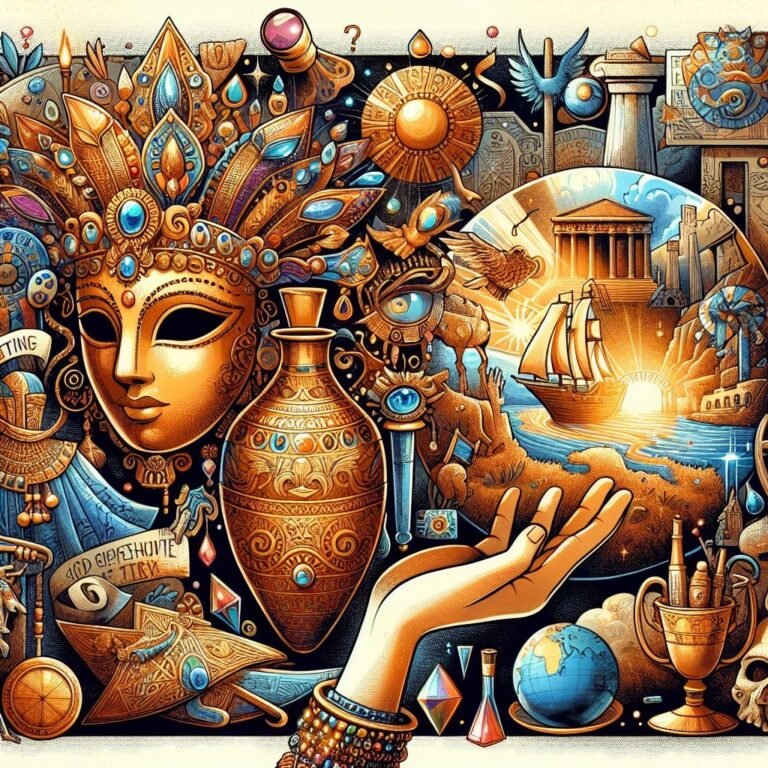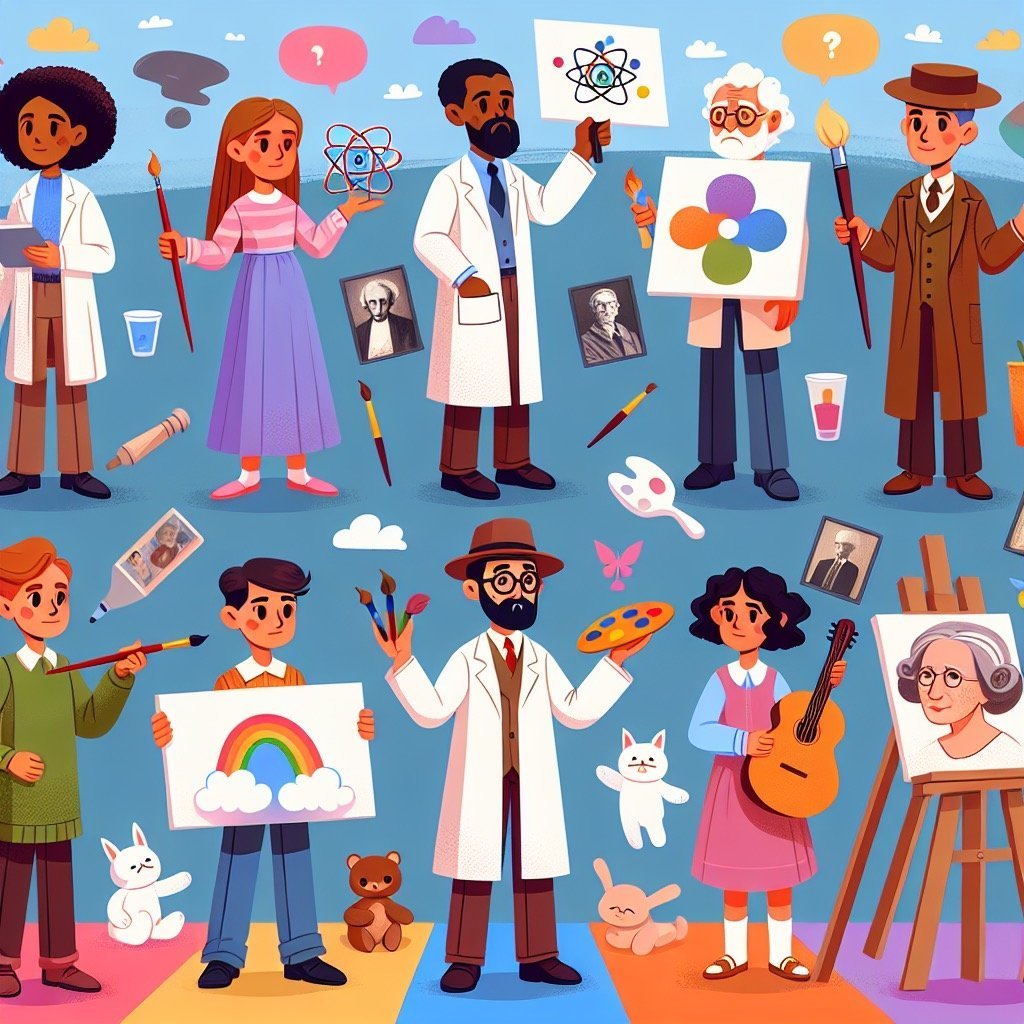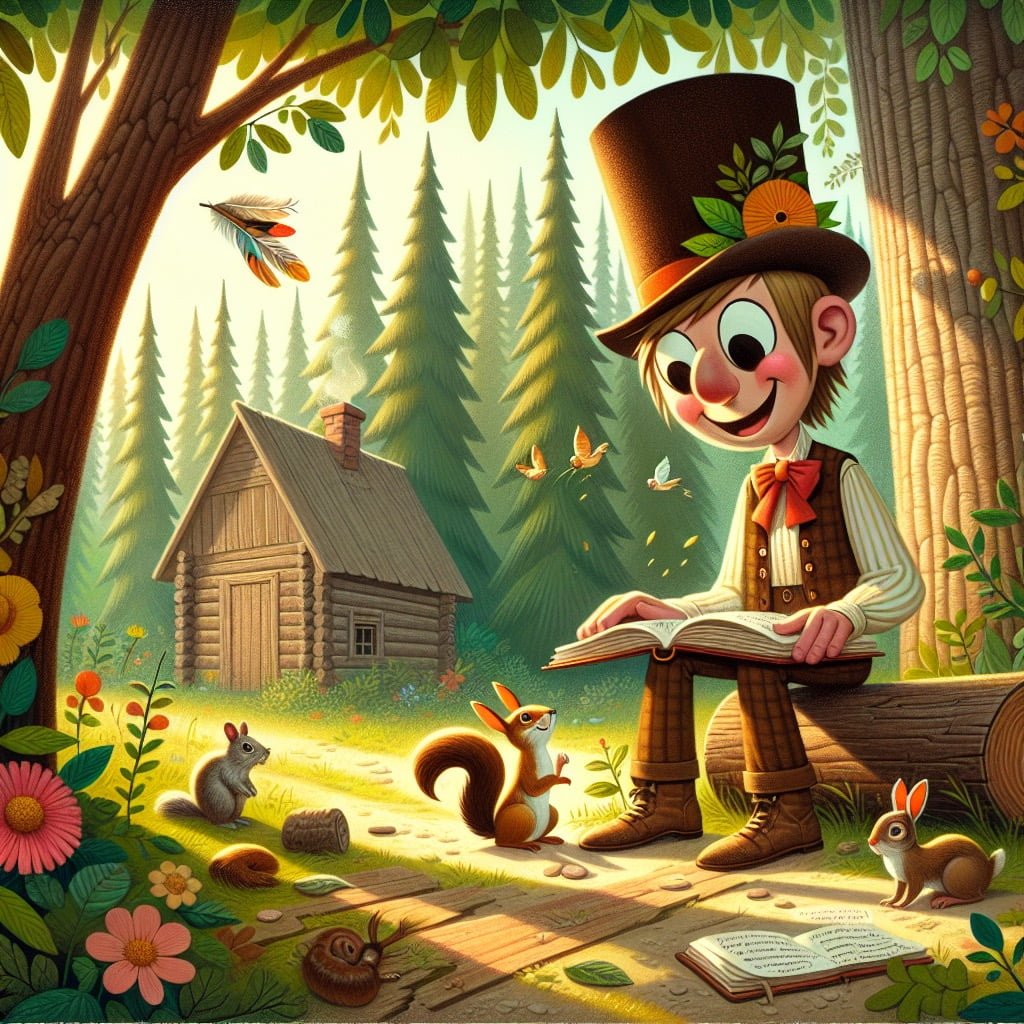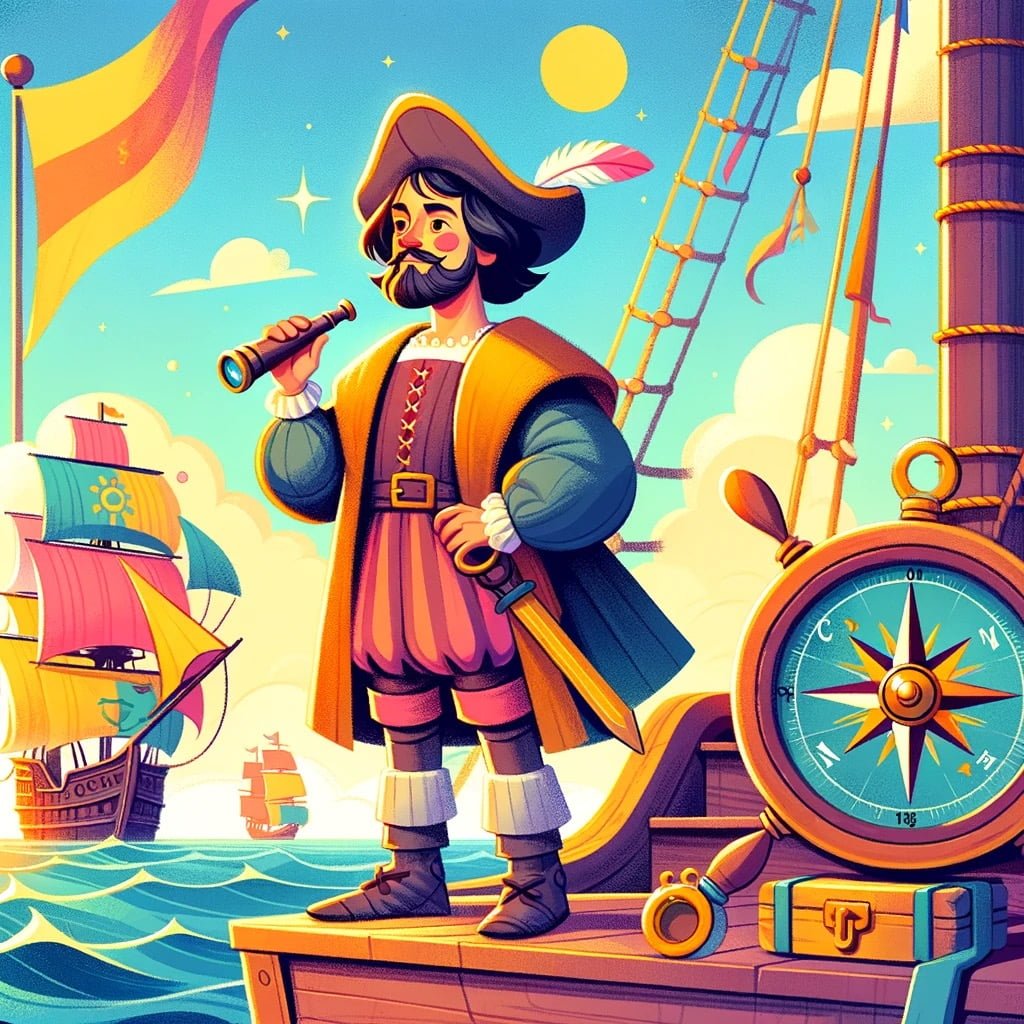Welcome to a world of wonder and mystery as we delve into the fascinating realm of **Fun Facts for Kids About Ancient Treasures**. Step back in time and explore the incredible stories behind some of history’s most captivating artifacts and gems. From cursed diamonds to majestic golden masks, each ancient treasure holds a unique tale waiting to be discovered. Join us on a journey through the ages as we uncover the secrets and legends surrounding these ancient marvels, igniting curiosity and sparking the imagination of both young and old alike. Prepare to be enchanted by the allure of ancient civilizations and the magic of bygone eras as we embark on this exciting adventure into the world of ancient treasures.
Fun Facts for Kids About Ancient Treasures
1. The Hope Diamond’s Mysterious Curse
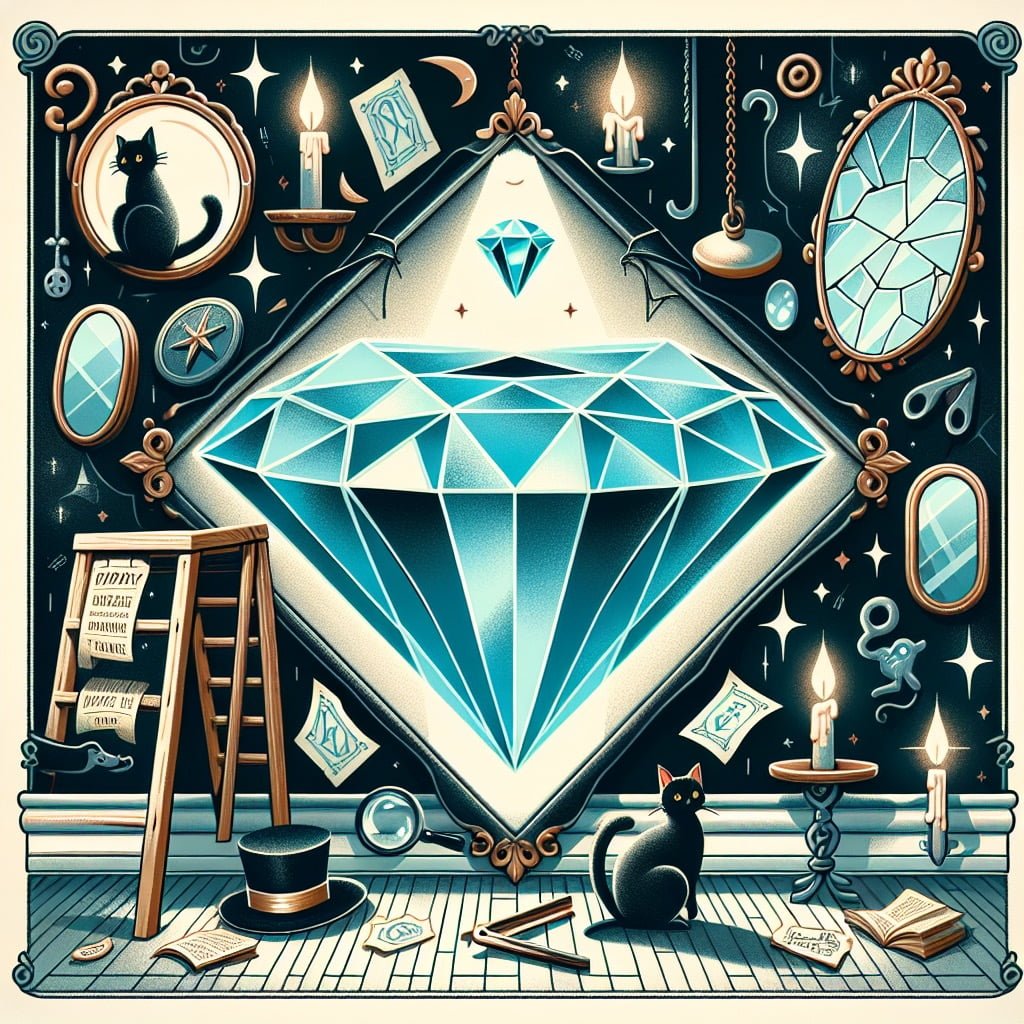
For younger kids: The Hope Diamond is a big, blue gem with a spooky story!
For older kids: Legend has it that the Hope Diamond carries a curse, causing misfortune and tragedy to those who possess it. Despite this, it remains one of the world’s most famous jewels, known for its deep blue color.
Detailed explanation:The Hope Diamond, a famous blue diamond with a long and storied history, is said to be cursed. This mysterious curse has captured the imagination of many throughout the years, adding to the allure and mystique of this ancient treasure.
Legend has it that the curse began when the diamond was stolen from an idol in India in the 17th century. Since then, the diamond has passed through the hands of many owners, leading to untimely deaths, financial ruin, and other misfortunes. One of the most well-known stories is that of Marie Antoinette, who was said to have worn the diamond before meeting her tragic end at the guillotine during the French Revolution.
Despite these tales of tragedy and misfortune, the Hope Diamond remains one of the most famous and sought-after gems in the world. Its deep blue color and large size make it a true marvel of nature, and its history only adds to its value and allure. The curse, whether real or imagined, serves to further enhance the diamond’s reputation and mystique, making it a fascinating topic of discussion for gem enthusiasts and historians alike.
In conclusion, the Hope Diamond’s mysterious curse is just one of the many intriguing tales surrounding ancient treasures. Fun Facts for Kids About Ancient Treasures can serve as a window into the world of history, archaeology, and gemology, allowing young minds to explore the wonders of the past and the mysteries that continue to captivate us to this day.
Fun Facts for Kids About Ancient Treasures
2. King Tut’s Golden Mask
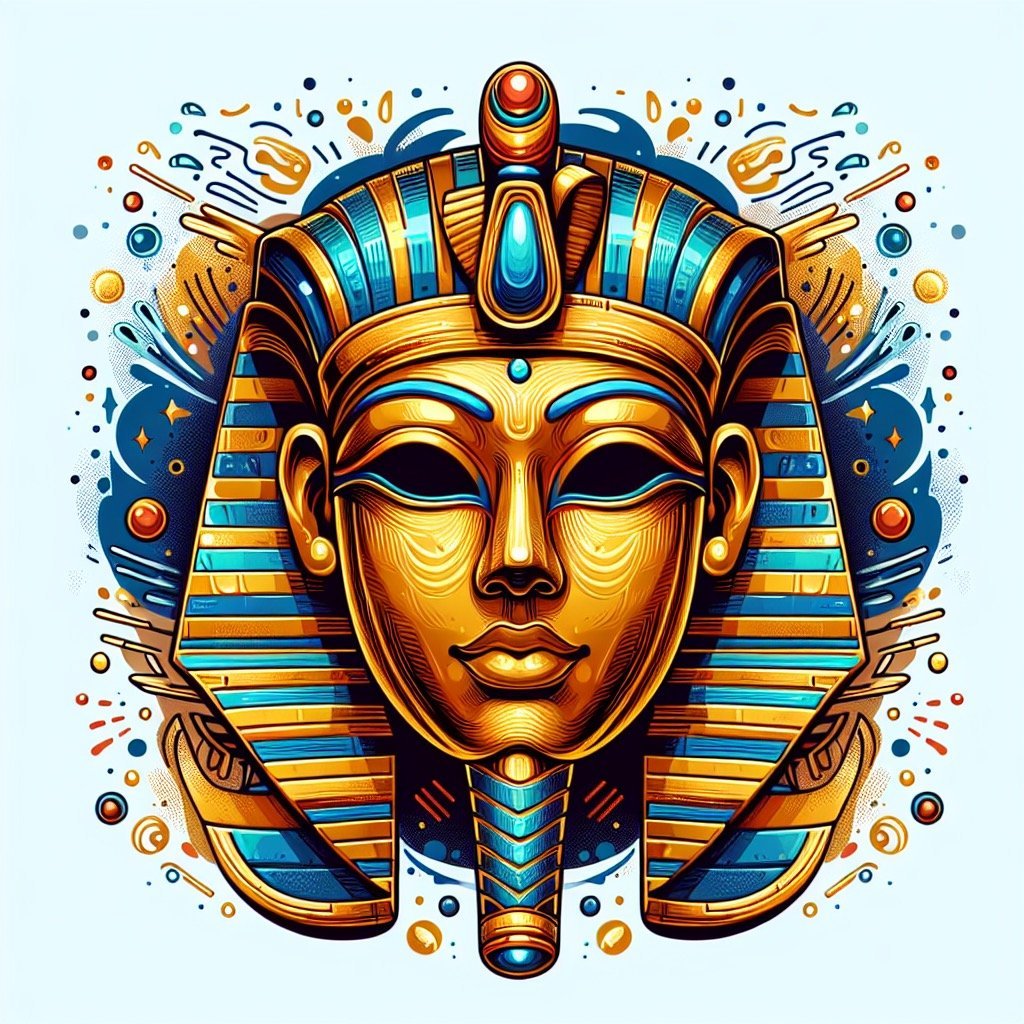
For younger kids: King Tut had a shiny gold mask that he wore in the afterlife.
For older kids: King Tutankhamun’s burial mask is an exquisite piece of ancient artistry. Crafted in gold, the mask was placed on the young pharaoh’s mummy to ensure a prosperous journey in the afterlife.
Detailed explanation:One of the most iconic ancient treasures is King Tutankhamun’s golden mask, which is a symbol of ancient Egyptian wealth and craftsmanship. This fun fact for kids about ancient treasures showcases the exquisite beauty and detailed craftsmanship that went into creating this stunning piece of art.
King Tutankhamun’s golden mask was discovered in 1922 by British archaeologist Howard Carter in the boy king’s tomb in the Valley of the Kings. The mask is made of solid gold and weighs over 20 pounds, showcasing the wealth and power of ancient Egyptian royalty. The intricate details of the mask, such as the inlaid glass eyes and the intricate headdress, demonstrate the skill and artistry of ancient Egyptian artisans.
The golden mask was meant to protect and guide King Tutankhamun’s spirit in the afterlife, showcasing the importance of religious beliefs and rituals in ancient Egyptian culture. The mask also serves as a reminder of the elaborate burial practices and beliefs in the afterlife held by the ancient Egyptians.
Today, King Tut’s golden mask is on display at the Egyptian Museum in Cairo, where it continues to awe visitors with its beauty and craftsmanship. This ancient treasure serves as a testament to the rich history and culture of ancient Egypt, captivating audiences of all ages with its beauty and mystery. So, the next time you learn about ancient treasures, be sure to include King Tut’s golden mask in your list of fun facts for kids about ancient treasures.
Fun Facts for Kids About Ancient Treasures
3. The Rosetta Stone’s Language Key
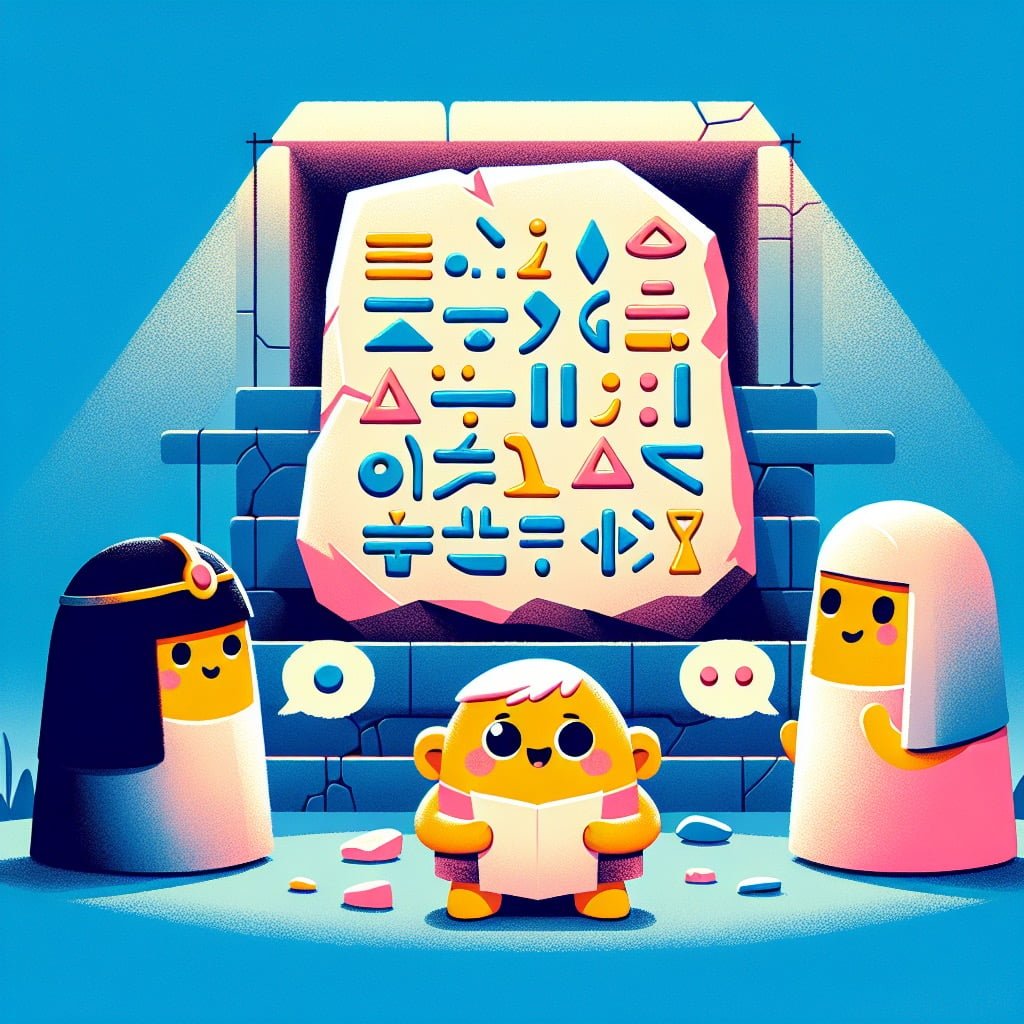
For younger kids: The Rosetta Stone helped us understand ancient languages.
For older kids: Discovered in 1799, the Rosetta Stone was crucial in deciphering Egyptian hieroglyphs. This ancient artifact provided the key to understanding the language and culture of ancient Egypt.
Detailed explanation:The Rosetta Stone is an ancient artifact that was discovered in Egypt in 1799 by French soldiers. It is a large, inscribed stone that dates back to 196 BC and contains a decree issued by King Ptolemy V in three languages: Ancient Egyptian hieroglyphs, Demotic script, and Ancient Greek. This stone proved to be the key to deciphering Ancient Egyptian hieroglyphs, which had been a mystery for centuries.
One of the KEYWORD fun facts for kids about ancient treasures is how the Rosetta Stone played a crucial role in unlocking the secrets of the Ancient Egyptian language. Prior to the discovery of the Rosetta Stone, hieroglyphs were considered undecipherable symbols. However, because the decree on the Rosetta Stone was written in both Ancient Egyptian hieroglyphs and Ancient Greek, scholars were able to use the known Ancient Greek text to start deciphering the hieroglyphs.
Thanks to the Rosetta Stone, linguists were able to crack the code of the hieroglyphs and gain a better understanding of Ancient Egyptian culture, history, and language. This breakthrough opened up a whole new world of knowledge about one of the most fascinating ancient civilizations.
In conclusion, the Rosetta Stone is not only a valuable ancient treasure in its own right, but it also serves as a language key that unlocked the mysteries of the Ancient Egyptian hieroglyphs. Its discovery and subsequent decipherment have provided invaluable insights into the history and culture of Ancient Egypt, making it a truly remarkable and significant artifact in the study of archaeology and linguistics.
Fun Facts for Kids About Ancient Treasures
4. The Terracotta Army’s Silent Guardians
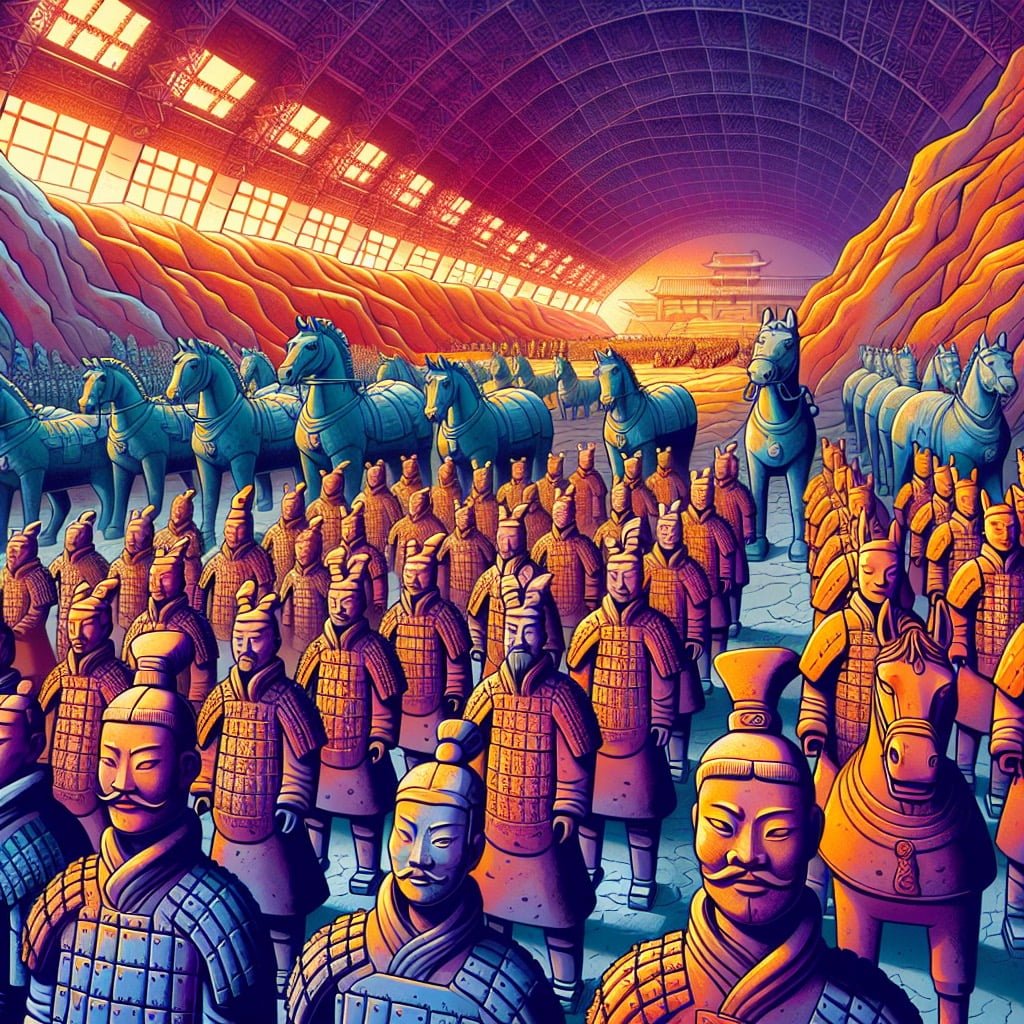
For younger kids: China has an army made of clay soldiers to protect a king.
For older kids: Built to guard Emperor Qin Shi Huang’s tomb, the Terracotta Army consists of thousands of life-sized clay soldiers, horses, and chariots. Each figure is unique, showcasing incredible craftsmanship.
Detailed explanation:The Terracotta Army, also known as the Terracotta Warriors, is a collection of life-sized sculptures depicting the armies of Qin Shi Huang, the first Emperor of China. These sculptures were buried with the emperor in 210–209 BC with the purpose of protecting him in the afterlife. Discovered in 1974 by local farmers in Lintong District, Xi’an, Shaanxi province, China, the Terracotta Army is now one of the most famous archaeological sites in the world.
One fun fact for kids about ancient treasures is that each Terracotta Warrior is unique in its facial features, hairstyle, and clothing, which suggests that they were modeled after real soldiers from Qin Shi Huang’s army. These sculptures were originally painted in bright colors, but due to exposure to air and elements over the centuries, the paint has faded away. However, archaeologists have been able to restore some of the colors through careful excavation and preservation techniques.
Another interesting fact is that the Terracotta Army is just one part of a massive mausoleum complex that includes pits with bronze chariots, horses, and other artifacts. The sheer scale and detail of the Terracotta Army reflect the wealth and power of the Qin Dynasty and the importance they placed on the afterlife.
In conclusion, the Terracotta Army stands as a testament to the craftsmanship and ingenuity of ancient Chinese artisans, as well as the beliefs and rituals surrounding death in ancient China. This archaeological wonder continues to captivate historians, archaeologists, and tourists alike, providing a fascinating glimpse into the past.
Fun Facts for Kids About Ancient Treasures
5. The Lost City of Atlantis Mystery

For younger kids: Atlantis is a city that disappeared under the sea.
For older kids: The legend of Atlantis, a lost city with advanced civilization, has intrigued explorers and historians for centuries. While its existence remains a mystery, it sparks imagination about ancient cultures.
Detailed explanation:The Lost City of Atlantis is a fascinating mystery that has captured the imagination of both scholars and the general public for centuries. According to the writings of the Greek philosopher Plato, Atlantis was a powerful and advanced civilization that existed over 11,000 years ago. The civilization was said to be located beyond the Pillars of Hercules, which are believed to be the Rock of Gibraltar and Mount Hacho in Spain.
Many theories have been proposed about the location of Atlantis, with some believing it may have been a real place that was destroyed by a natural disaster such as a volcanic eruption or earthquake. Others speculate that Atlantis was purely a mythical invention by Plato to convey philosophical or moral lessons.
Despite numerous expeditions and investigations, the exact location of Atlantis remains unknown. However, many ancient treasures have been discovered underwater in various parts of the world, adding to the allure of the mystery. These treasures provide clues about the advanced technologies and artistic skills of ancient civilizations, sparking the imagination of both historians and treasure hunters alike.
The allure of ancient treasures such as those found in sunken cities like Atlantis provides a gateway to understanding the past and appreciating the ingenuity of our ancestors. Exploring the mysteries of lost civilizations can be both educational and entertaining, making it a popular topic for kids and adults alike. The quest to uncover the truth about Atlantis continues to captivate people around the world, keeping the legend alive for generations to come.
Fun Facts for Kids About Ancient Treasures
6. The Golden Scepter of Tutankhamun
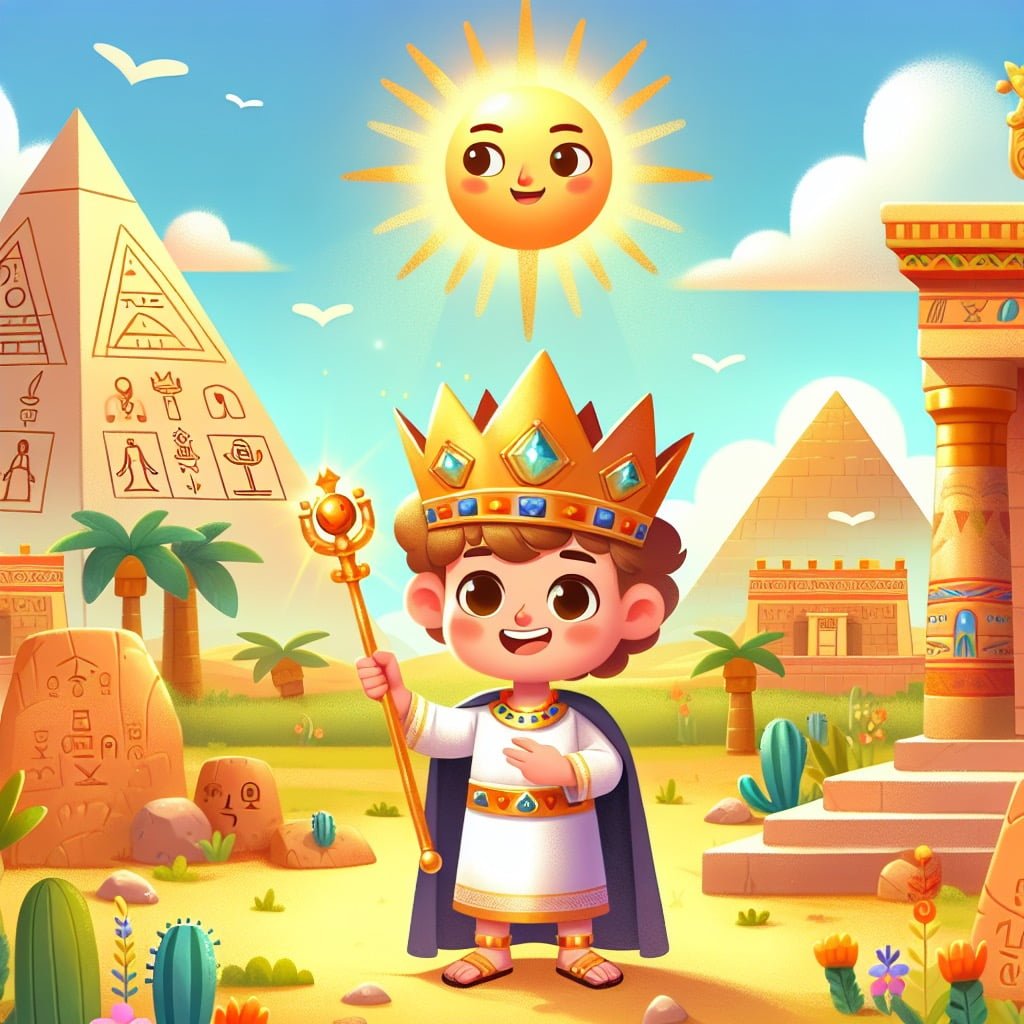
For younger kids: King Tut had a magical golden stick!
For older kids: Tutankhamun’s golden scepter, adorned with a scarab beetle, symbolized his authority. Ancient Egyptians believed the scarab beetle brought good luck and protection.
Detailed explanation:One of the most fascinating ancient treasures from Egyptian history is the Golden Scepter of Tutankhamun. Tutankhamun, also known as King Tut, was a young pharaoh who ruled Egypt during the 18th dynasty. His tomb was discovered in 1922 by archaeologist Howard Carter, and it contained a wealth of treasures, including the Golden Scepter.
The Golden Scepter is a symbol of authority and power, often held by rulers in ancient Egypt. It is made of gold and features intricate carvings and hieroglyphics that tell a story of the pharaoh’s reign. The scepter was likely used in ceremonies and rituals, demonstrating the king’s connection to the gods and his divine right to rule.
What makes the Golden Scepter of Tutankhamun so special is not just its exquisite craftsmanship, but also the historical significance it holds. It provides a peek into the beliefs and practices of ancient Egyptian society, shedding light on their religious customs and political structures.
For kids interested in learning more about ancient treasures, the Golden Scepter of Tutankhamun is a perfect example of the rich history that can be uncovered through archaeology. Exploring artifacts like this can be both educational and exciting, as they offer a glimpse into a world that existed thousands of years ago.
In conclusion, the Golden Scepter of Tutankhamun is a prime example of the fascinating ancient treasures that have been unearthed by archaeologists. Its intricate design and historical importance make it a valuable piece of Egypt’s past, providing valuable insights into the culture and society of the time. It truly is one of the many fun facts for kids about ancient treasures that continue to capture our imaginations today.
Fun Facts for Kids About Ancient Treasures
7. The Elgin Marbles’ Ancient Art
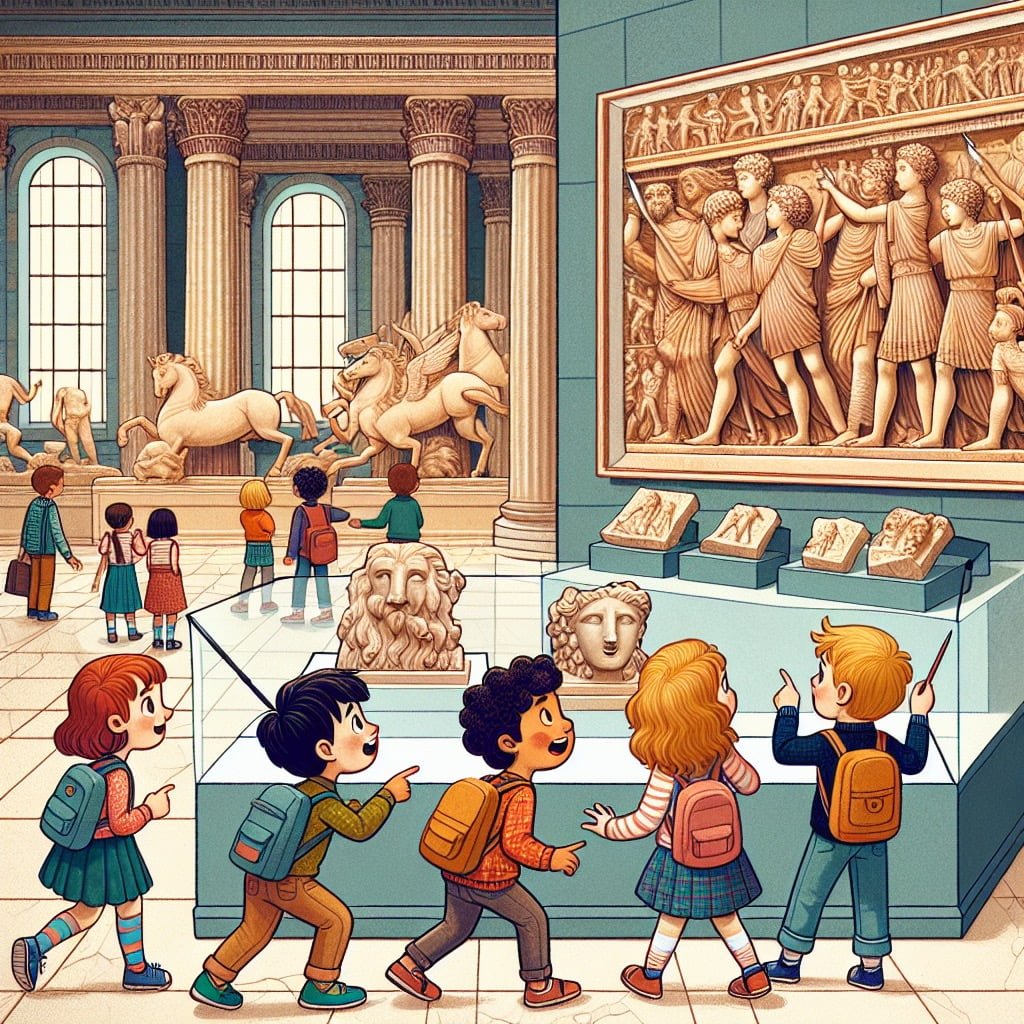
For younger kids: The Elgin Marbles are beautiful sculptures from Greece.
For older kids: The Elgin Marbles, once part of the Parthenon in Athens, Greece, are classical sculptures depicting mythological scenes. They are a testament to ancient Greek art and architecture.
Detailed explanation:The Elgin Marbles, also known as the Parthenon Marbles, are a collection of ancient Greek sculptures that were originally part of the Parthenon temple in Athens. These marbles were acquired by Lord Elgin, a British ambassador to the Ottoman Empire, in the early 19th century. The sculptures depict various scenes from Greek mythology, as well as figures of gods, goddesses, and mortals.
One of the fascinating Fun Facts for Kids About Ancient Treasures associated with the Elgin Marbles is the debate surrounding their ownership and display. The British Museum currently houses the majority of the sculptures, while Greece has long campaigned for their return. This controversy has sparked discussions about the rightful ownership of cultural artifacts and the ethics of their acquisition.
Another interesting aspect of the Elgin Marbles is their artistic significance. These ancient treasures are considered masterpieces of classical Greek art and have influenced countless artists and art movements throughout history. The intricate details, lifelike poses, and expressive faces of the sculptures demonstrate the skill and creativity of ancient Greek artisans.
Studying the Elgin Marbles provides valuable insights into ancient Greek culture, mythology, and artistic techniques. By examining these sculptures, historians and archaeologists can learn about the beliefs, values, and aesthetics of the people who created them. The Elgin Marbles serve as important symbols of Greece’s rich cultural heritage and continue to inspire admiration and fascination in people around the world.
Fun Facts for Kids About Ancient Treasures
8. The Fabergé Eggs’ Imperial Elegance
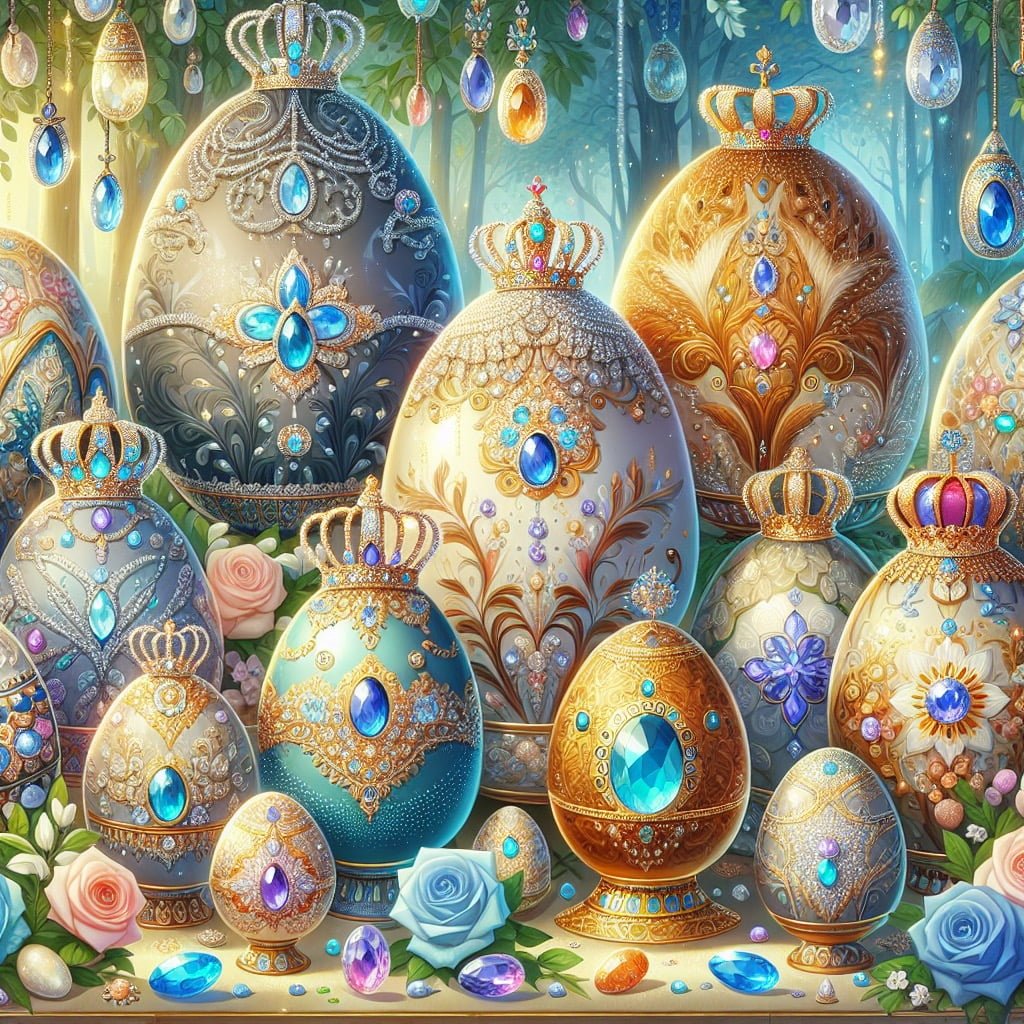
For younger kids: Fabergé Eggs are fancy eggs made for Russian kings and queens.
For older kids: Crafted by the House of Fabergé, these jeweled eggs were Easter gifts for Russian royalty. Each egg is a masterpiece of craftsmanship, featuring intricate designs and precious gems.
Detailed explanation:The Fabergé Eggs are a collection of extravagant and intricately designed jeweled eggs created by the House of Fabergé in Russia. These exquisite pieces of art were commissioned by Russian Tsars Alexander III and Nicholas II as Easter gifts for their wives and mothers. Each egg was meticulously crafted by skilled artisans, using precious metals, gemstones, and intricate enameling techniques to create stunning and intricate designs.
One of the most remarkable things about the Fabergé Eggs is their imperial elegance and the attention to detail that went into their creation. From the delicate engravings on the metal shells to the hidden surprises inside each egg, such as miniature replicas of royal crowns or tiny mechanical figures, these eggs were truly a sight to behold. The craftsmanship and artistry that went into making each egg were truly unparalleled, making them valuable treasures that have captivated people around the world.
These ancient treasures are not only visually stunning but also hold a significant historical and cultural importance. They serve as a window into the lavish lifestyle of the Russian imperial family and the skilled craftsmanship of the artisans who created them. The Fabergé Eggs have become iconic symbols of luxury and elegance, representing a bygone era of opulence and splendor.
In conclusion, the Fabergé Eggs are more than just beautiful works of art – they are a symbol of imperial elegance and a testament to the exquisite craftsmanship of their creators. These ancient treasures continue to fascinate people of all ages with their rich history, intricate designs, and hidden surprises, making them truly fun facts for kids about ancient treasures.
Fun Facts for Kids About Ancient Treasures
9. The Sistine Chapel Ceiling’s Masterpiece
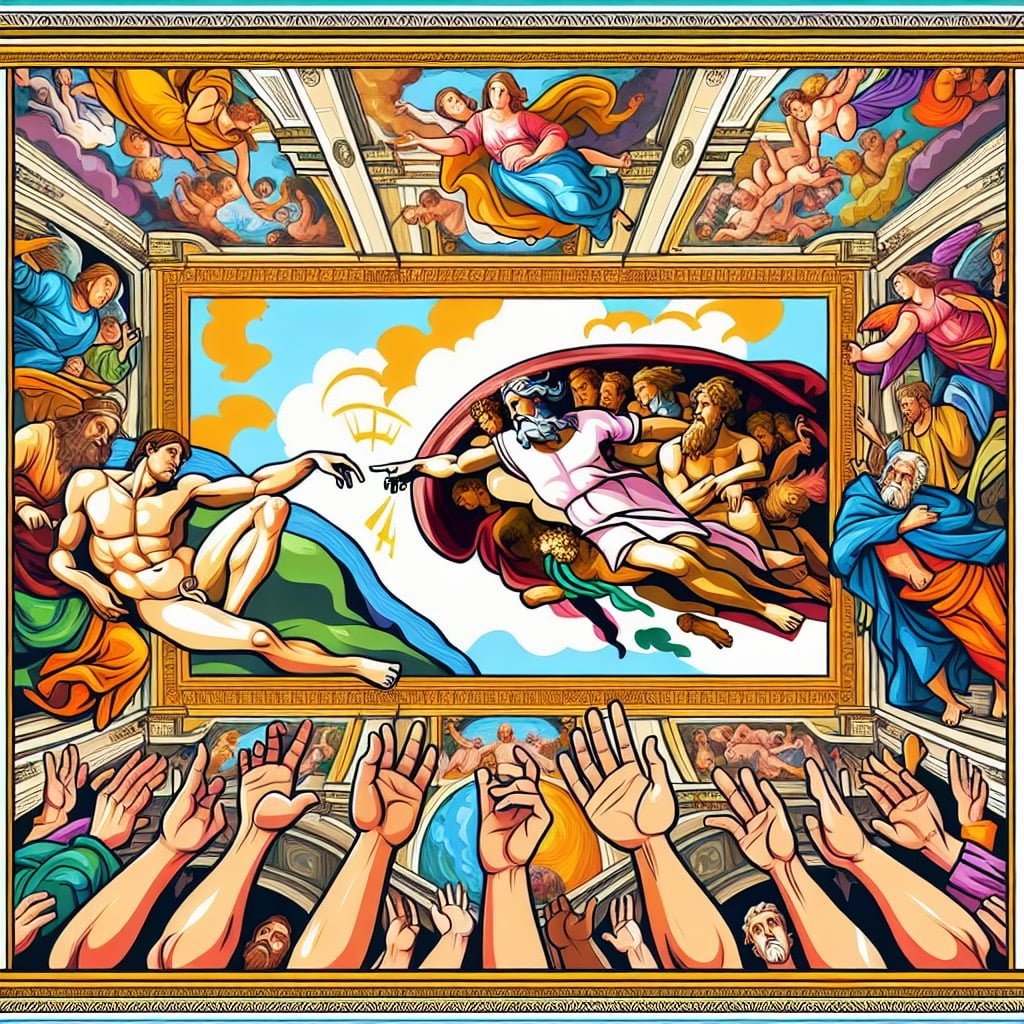
For younger kids: The Sistine Chapel has a special ceiling painted by a famous artist.
For older kids: Painted by Michelangelo, the Sistine Chapel ceiling is a masterpiece of Renaissance art. The intricate frescoes depict biblical scenes and are considered one of the greatest achievements in Western art.
Detailed explanation:One of the most famous ancient treasures in the world is the Sistine Chapel Ceiling, painted by the renowned artist Michelangelo. This masterpiece is located in the Vatican City and is considered one of the greatest works of art in history.
The Sistine Chapel Ceiling is not only visually stunning, but it is also filled with symbolism and meaning. The most well-known section of the ceiling is the fresco painting of the “Creation of Adam,” which shows God reaching out to touch Adam’s hand and give him life. This iconic image has become a symbol of human creativity and divine inspiration.
In addition to the “Creation of Adam,” the Sistine Chapel Ceiling also features several other scenes from the Bible, such as the stories of Noah and the Great Flood, and the Last Judgment. Each part of the ceiling is carefully crafted to tell a story and evoke a sense of awe and wonder in those who view it.
Fun Facts for Kids About Ancient Treasures like the Sistine Chapel Ceiling can include the incredible amount of time and skill it took to create such a masterpiece. Michelangelo spent four years painting the ceiling, often working while lying on his back on scaffolding high above the chapel floor. The level of detail and precision in the paintings is truly remarkable and shows the dedication and talent of the artist.
Overall, the Sistine Chapel Ceiling is not just a beautiful work of art, but a testament to the power of human creativity and ingenuity. It continues to inspire and captivate audiences from around the world, making it a true ancient treasure that will be admired for generations to come.
Fun Facts for Kids About Ancient Treasures
10. The Treasures of Machu Picchu

For younger kids: Machu Picchu is an ancient city high in the mountains.
For older kids: The Inca city of Machu Picchu in Peru is a treasure trove of ancient wonders. Its well-preserved structures and stunning landscapes provide insights into the Inca civilization.
Detailed explanation:Machu Picchu, located in Peru, is one of the most well-known ancient treasures in the world. This UNESCO World Heritage site is a fascinating example of Incan architecture and engineering, and offers a glimpse into the rich history and culture of the Incan civilization.
One of the most interesting Fun Facts for Kids About Ancient Treasures is that Machu Picchu was built in the 15th century, during the height of the Incan Empire. It is believed to have been a royal estate or sacred religious site, as it contains temples, plazas, and other structures that hint at its important ceremonial function. The site is also surrounded by agricultural terraces and irrigation systems, showcasing the Incan’s advanced knowledge of agriculture and water management.
Another fascinating Fun Fact for Kids About Ancient Treasures is that Machu Picchu was abandoned by the Incans in the 16th century, during the Spanish conquest of Peru. The site was left untouched for centuries, until it was rediscovered by American explorer Hiram Bingham in 1911. Bingham’s expedition brought Machu Picchu to the attention of the world, and it has since become a popular destination for tourists and archaeologists alike.
Visitors to Machu Picchu can explore the many buildings and structures that make up the site, including the iconic Temple of the Sun and the Room of the Three Windows. The breathtaking views of the surrounding Andes Mountains and the Sacred Valley make Machu Picchu a truly awe-inspiring place to visit. Overall, the ancient treasures of Machu Picchu continue to capture the imagination of people around the world, and serve as a reminder of the ingenuity and sophistication of the Incan civilization.
Did You Know?
Ancient treasures hold not only historical value but also the magic of bygone eras, connecting us to the rich tapestry of human history.
Fun Facts for Kids About Ancient Treasures
Embarking on a journey into the world of ancient treasures is not just a fascinating exploration of history and culture, but also a fun and educational experience for kids. By learning intriguing facts about ancient artifacts, children can develop a deeper appreciation for the creativity and ingenuity of past civilizations. These fun facts can spark their curiosity and imagination, encouraging them to delve further into the mysteries of the past.
Moreover, studying ancient treasures can help children build critical thinking skills and expand their historical knowledge in an engaging manner. By uncovering the stories behind these artifacts, kids can gain a greater understanding of how different cultures lived and thrived thousands of years ago, fostering a sense of empathy and interconnectedness with people from around the world.
Additionally, exploring ancient treasures can inspire a sense of wonder and awe in children, igniting a passion for learning and discovery that can last a lifetime. By delving into the world of ancient artifacts, kids can cultivate a sense of curiosity and exploration that will encourage them to seek out new knowledge and experiences in the future.
In conclusion, delving into fun facts about ancient treasures is not only an exciting adventure for kids, but also a valuable educational opportunity that can enrich their understanding of history, culture, and humanity. So, why not encourage your children to dive deeper into the world of ancient treasures and uncover the wonders that await them?
Sources and additional information for Fun Facts for Kids About Ancient Treasures
WikipediaHistory ChannelThe Smithsonian InstitutionLibrary of CongressNational ArchivesBBC HistoryThe Metropolitan Museum of ArtArchaeological Institute of AmericaGilder Lehrman Institute of American HistoryHistory.comBBC HistorySmithsonian History & CultureThe Metropolitan Museum of Art – Heilbrunn Timeline of Art HistoryLibrary of Congress – Digital CollectionsNational ArchivesWorld History EncyclopediaHISTORYNETAncient History EncyclopediaThe History Channel
